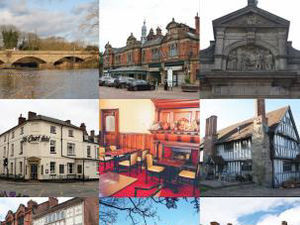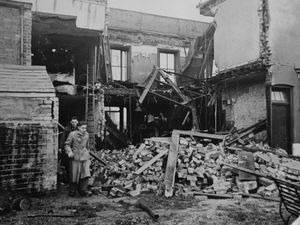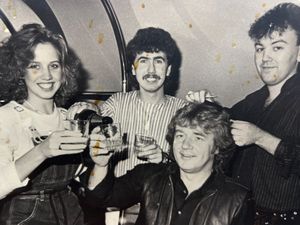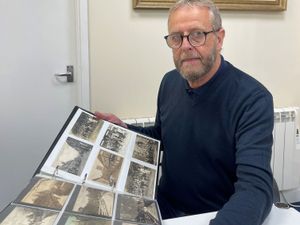Impressive farewell to a local squire
Now that's what you call an impressive turnout for a funeral.
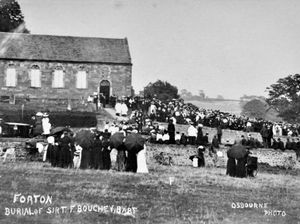
This old postcard from the collection of Ray Farlow of Bridgnorth bears the caption on the front "Forton, Burial of Sir T F Boughey, Bart."
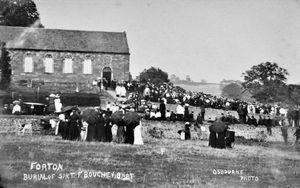
The location is All Saints Church at Forton, near Newport, and although the card bears no other details on the reverse, the Boughey death which fits is that of Sir Thomas Fletcher Fenton Boughey, the local squire, who died on August 30, 1906.
The funeral was on Monday, September 3, with the body being borne from his home at Aqualate Hall on one of the estate's timber waggons, with workmen acting as bearers. At Forton there was a large crowd which was kept in order by members of Staffordshire Police Force.
If you look closely you can see that some folk came to pay their respects pushing prams, and others arrived on bicycles, some of which can be seen leaning against the wall. It's interesting to note that it clearly was not mandatory for women mourners to wear black.
Long ago it might have been, but Sir Thomas left his mark on the area and it is still felt to this day.
Incidentally the picture was taken by "Osbourne," a contemporary photographer who captured many scenes and events in pictures used as postcards around that time. The distinctive walls are still there today, and the viewpoint was from a field overlooking the church.
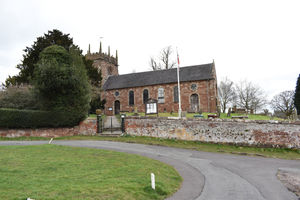
Sir Thomas, from Aqualate Park on the outskirts of Newport, was a baronet, and died in his 71st year after a long illness.
Educated at Eton and Christ Church, Oxford, he was, according to the obituary printed in the Wellington Journal & Shrewsbury News, highly popular in all circles of society.
"This was largely due to his long connection, extending over a period of 40 years, with the Albrighton Hunt, for which he acted for a considerable portion of that time as master."
In earlier life he had lived near Hilton, not far from Bridgnorth, and then at Old Hall, Brewood.
"His coming-of-age rejoicings in 1857 rank as one of the greatest events in the history of Newport, the scene in the streets forming the subject of a painting, copies of which are rare and valuable."
He succeeded his father as baronet in 1880, afterwards coming to live at Aqualate Hall and taking a lively interest in local affairs, in particular in the field of agriculture.
"The estate was kept up at great expense, his gardens were noted for their beauty, and nowhere were there better homesteads, buildings, and cottages, while he did very much to induce tenants to rear good stock and grow the best of product."
He initiated Newport and District Agricultural Society, with an annual show in Newport, and was its first president.
He was one of the three original trustees under the will of the late Thomas Harper-Adams, who laid the foundation, by his bequest, of Harper Adams Agricultural College – it's now Harper Adams University – and Sir Thomas had much to do with setting it up.
Among various other roles he was a local councillor and magistrate.
A generous landlord and public man with a notable career then, according to the paper, which told how "as the funeral party filed out of the south door to the grave, Newport, Forton, Gnosall and the intervening country were in a state of mourning, flags were flown at half mast, muffled peals were rung on the church bells, and houses and shops were shuttered."
Newport thought so much of him that it was to erect an impressive memorial which had pride of place in the centre of the town. However, it got in the way of traffic and was moved in the 1950s. These days it's in an alcove on the west side of Station Road.


